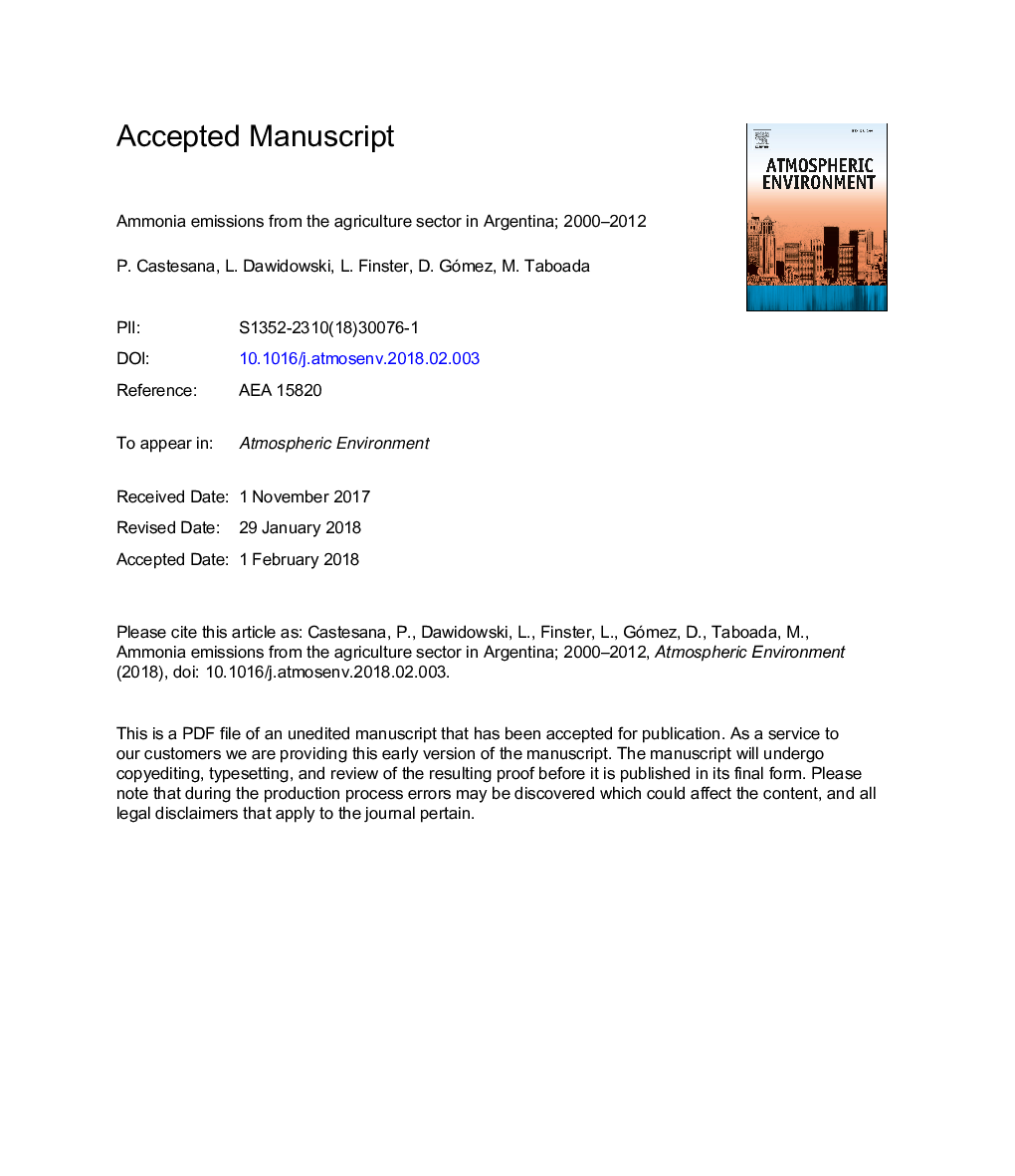| کد مقاله | کد نشریه | سال انتشار | مقاله انگلیسی | نسخه تمام متن |
|---|---|---|---|---|
| 8864053 | 1620296 | 2018 | 38 صفحه PDF | دانلود رایگان |
عنوان انگلیسی مقاله ISI
Ammonia emissions from the agriculture sector in Argentina; 2000-2012
ترجمه فارسی عنوان
انتشار آمونیاک از بخش کشاورزی در آرژانتین؛ 2000-2012
دانلود مقاله + سفارش ترجمه
دانلود مقاله ISI انگلیسی
رایگان برای ایرانیان
کلمات کلیدی
موجودی انتشار آمونیاک، فعالیت های مرتبط با کود استفاده از کود نیتروژن، تغییرات در فناوری کشاورزی، آمریکای جنوبی،
موضوعات مرتبط
مهندسی و علوم پایه
علوم زمین و سیارات
علم هواشناسی
چکیده انگلیسی
Agriculture is one of the key economic sectors in Argentina and, in the last decades, the increase in prices and competitiveness of some grains has imposed important changes. In this process, crop cultivation occupied significant extensions of land areas previously dedicated to livestock farming, which in turn have experienced intensification in terms of production through an increasing share of feedlot systems. The agriculture sector is the main NH3 emitter in Argentina, however no inventory developed locally has been thus far available. We estimated the time series 2000-2012 of NH3 emissions, both at national and spatially disaggregated levels. National NH3 emissions in 2012 amounted to 0.31â¯Â±â¯0.08â¯Tg, with the use of mineral fertilizers accounting for 43.0%, manure in pasture 32.5%, manure management 23.0% and agricultural waste burning 1.5%. Urea use was the major source of NH3 emissions and its application on wheat and corn crops dominated the trend. Emissions from open biomass burning were estimated but not included in the national totals because of the difficulties in differentiating between agricultural (i.e., prescribed burning of savannas) and non-agricultural emission sources. Compared to this work, NH3 emissions reported by EDGAR were 83% higher than our estimates. The time series of spatially distributed NH3 emission estimates clearly showed the effect of the expansion of cropland, the displacement of planted areas of N-fertilizes crops by competing soybean cultivation and the relocation and intensification of beef cattle production. This new inventory constitutes a tool for policies concerning the impact of agricultural activities on air quality and contributes with more accurate and updated information useful for atmospheric chemical transport modeling. The accuracy and applicability of the inventory may be improved by local studies aimed at refining the spatial disaggregation by focusing in specific areas of fertilizer application, reflecting seasonal and monthly patterns in agricultural practices and climate conditions and addressing likely changes in diets, productivity and excretion rates over time.
ناشر
Database: Elsevier - ScienceDirect (ساینس دایرکت)
Journal: Atmospheric Environment - Volume 178, April 2018, Pages 293-304
Journal: Atmospheric Environment - Volume 178, April 2018, Pages 293-304
نویسندگان
Paula S. Castesana, Laura E. Dawidowski, Laura Finster, DarÃo R. Gómez, Miguel A. Taboada,
